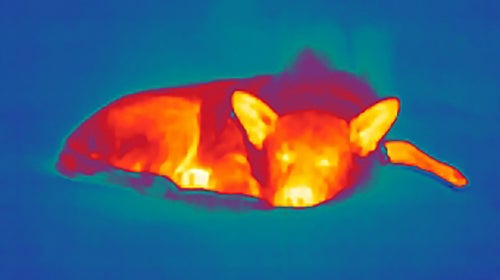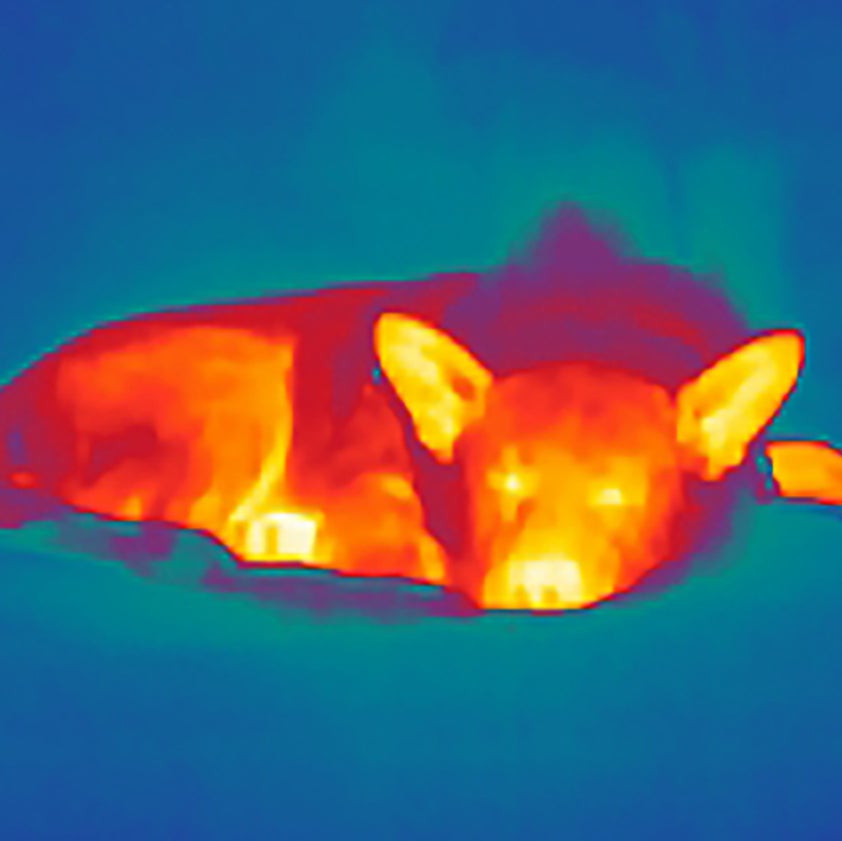Night vision: Freakin’ awesome, right? If you’re anything like me, you watched in awe as the first mainstream images made with the technology were transmitted by CNN during the 1991 invasion of Iraq. And since then, you’ve fantasized about using it in your own life. But until now, it’s been out of reach for normal people.
That changes with the release of this $600 thermal imaging monocular from FLIR.
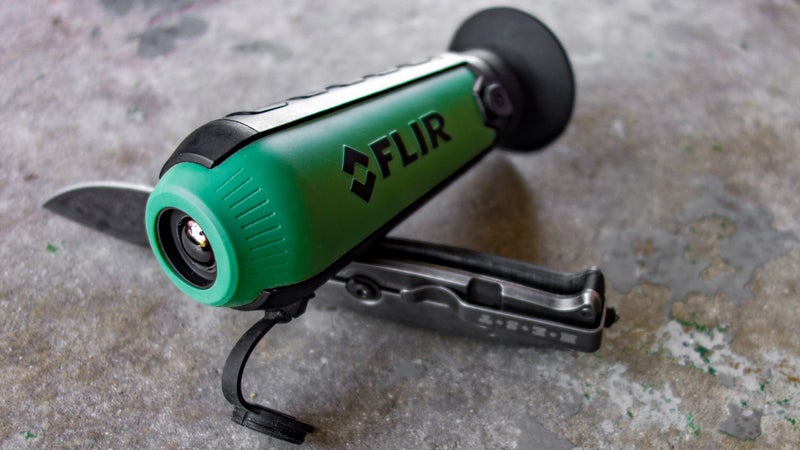
What Is It?
The is a consumer-grade thermal imaging monocular. It works by detecting relative heat. This is a vastly different approach from light-amplifying night vision. That means the FLIR isn’t just capable of seeing in the dark, but through smoke and fog, too.
The Scout TK displays relative heat differences, not absolute values: an object stands out when it’s a different temperature from its surroundings.
The handheld monocular recharges via USB and has a five-hour run time. In addition to displaying its images on a small screen, inside its eye cup, the Scout TK can also capture 1,000 images and shoot four hours of video.
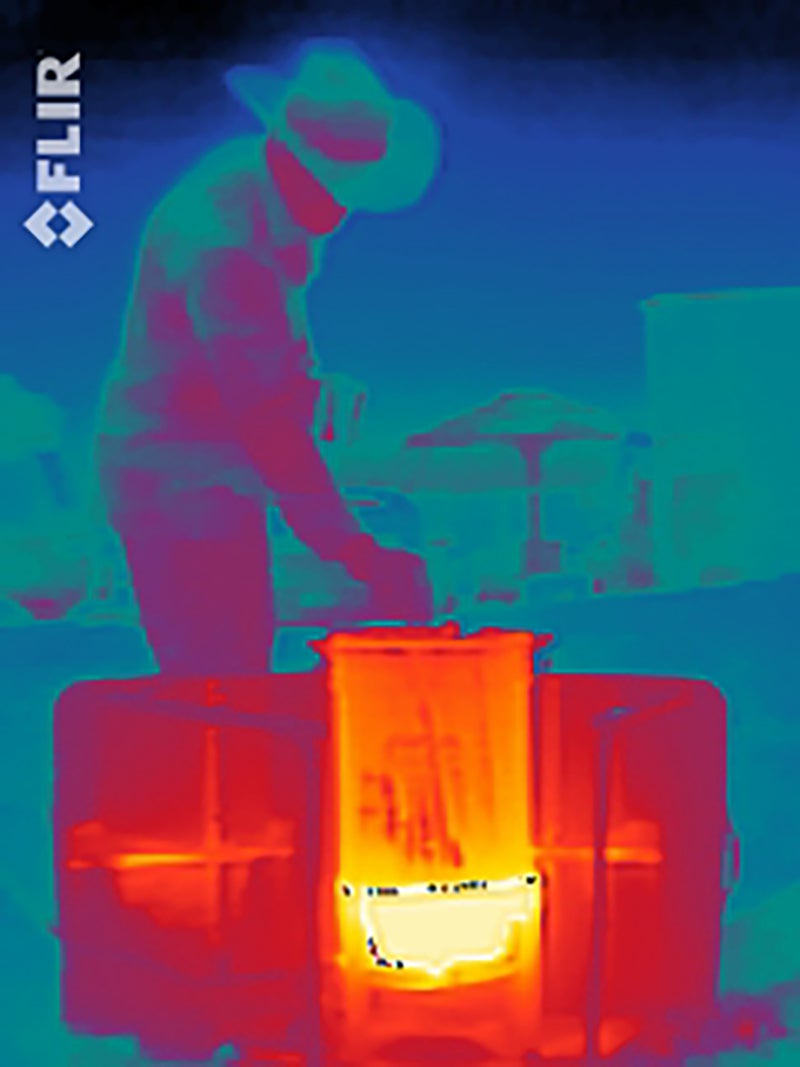
Who’s It For?
FLIR makes a wide range of thermal imaging devices, from ones designed to be used with drones to handheld units for firefighters to ones targeted at handymen (for detecting HVAC leaks and electrical problems) to more expensive monoculars targeted at hunters tracking animals from long distances.
The Scout TK looks and works a lot like the hunting optics, giving users the ability to view its screen stealthily, without emitting light. But it also has a broader range of applications, including home and campsite security, animal watching, and general outdoor pursuits.
So if you’ve ever thought that having a thermal imager outside might be neat, this product was designed for you.
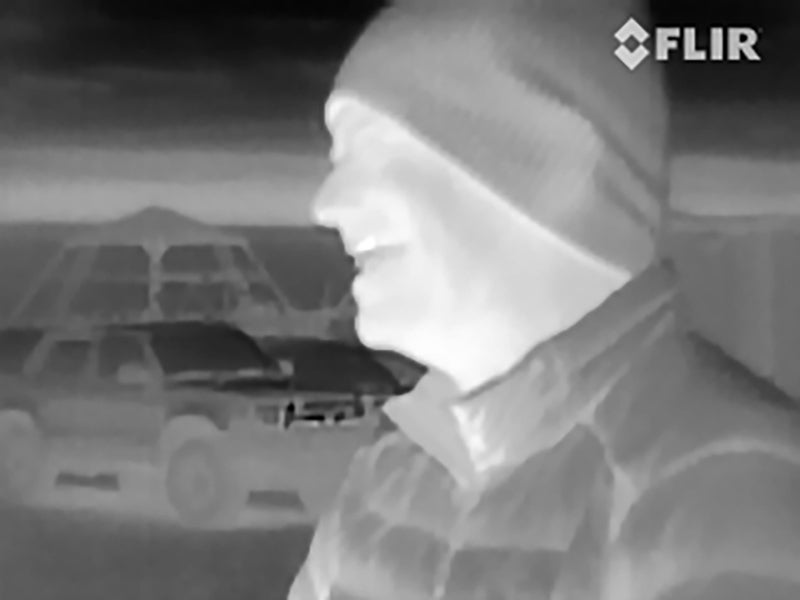
Design
The water and dust-resistant (IP67) rubberized, hand-sized exterior houses a detector capable of observing a 20-degree field of view, with a maximum effective range of 100 yards. You’ll be able to observe terrain features beyond that distance, but the device can’t detect the temperature differences necessary to spot animals or people beyond that range.
The detector captures video at 160×120 pixel resolution, but the small screen you view it through increases that to 640×480 for live display. That means each pixel covers eight inches at 100 yards. You’ll need to move substantially closer if you hope to view small animals, and it may be hard to identify even dog- or human-size critters at the device’s maximum range. The device captures images at 340x240px, at 96dpi; hardly high-res photography, but the result is loosely equivalent to most game cameras. You’re looking at sized-up images from the Scout TK in this article.
Users can switch through nine color palettes. The more colorful options produce the most eye-catching images and video, but greater detail can be observed through the two black-and-white modes.
At just six inches long and weighing six ounces, the Scout TK is easily pocketable. It’s also robust: you’ll be able to drop it, throw it in a pack full of other gear, and use it in poor weather without fear.
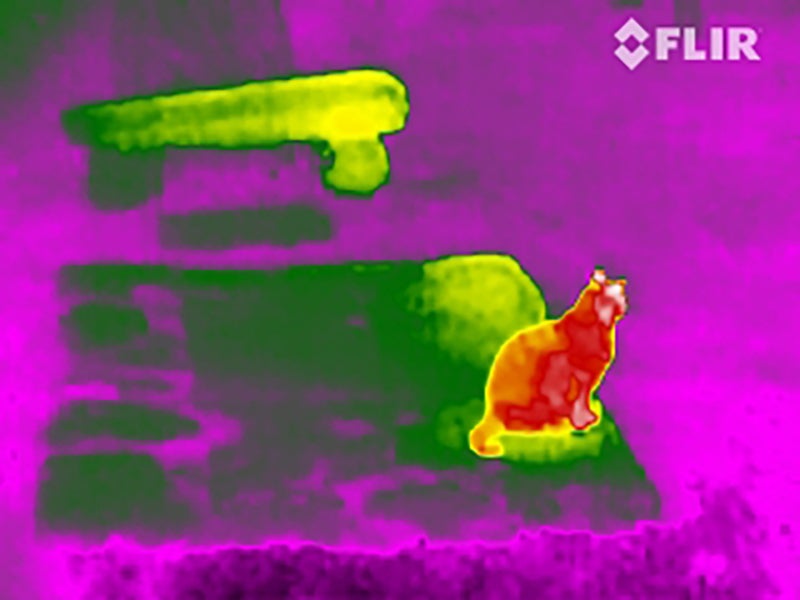
Using It
I’ve been playing with the Scout TK since last November, dragging it along to places like Baja, my family’s farm in France, and to Park City for a ski trip. Since it arrived at the end of hunting season, I haven’t yet been able to use it on an actual hunt, but I have attempted to use it to track coyotes and deer.
Whenever I pull it out on a camping trip, it elicits plenty of oohs and ahs, from friends. They get a kick out of walking around in the dark, being able to see where they’re going without using a flashlight, and for shooting photos of dogs and people goofing off. It entertained my 5-year-old nephew, Roscoe, for a full 15 minutes. That’s a new record.
But it has its limits. While camping in Death Valley, I heard coyotes yipping out in the creosote bushes one night, and went looking for them. I could hear I was getting closer, and probably got within 200 yards of them, but at no point was I ever able to see one through the imager. Over the rocky terrain, I was better off picking my way through using the limited ambient light from the stars than I was trying to look through the device's narrow field of view. I had a similar experience in France. I know what time the local deer pass through which field on the farm, but 100 yards just wasn’t enough useful range to pick them up on the device. Instead, I used a powerful flashlight.
One strong potential use case for the Scout TK is in following blood trails. When you put an arrow through an animal’s lungs, they survive for a short time afterward, and you need to follow the blood to find the animal's body. Dying animals can cover a surprising distance in a short period of time, and often instinctually seek out dense brush. Tracking can be a real challenge.
Since it’s not hunting season, I boiled a kettle full of water and splashed a trail of it across my front yard. Viewing through the monocular, the trail stood out in sharp relief. But, to avoid pushing animals, you need to wait anywhere from 10 to 30 minutes after you shoot them. After just five, the Scout TK was no longer able to pick up any residual heat from the boiling water.
(I wasn’t able to verify this as I wasn’t testing during hunting season, but I imagine the Scout TK would be good at finding a dead animal in the dark. Their bodies retain heat far longer than a blood trail, and animals like deer, elk, and bear are large enough to see through the device at its 100-yard range.)
It isn’t legal to hunt most animals in most places at night, and it isn’t ethical to take a shot on an animal if chances of recovering the body are slim. But sometimes you find yourself still trying to find that body after the sun’s gone down, and the Scout TK may be able help a bit then.
You will not be able to acquire a target, or take a shot using any type of weapon, through the Scout TK. Thermal imaging rifle scopes do exist, but they’re generally 10 times the price.
One other limitation of the device appears to be its ability to see through cold fog and mist. While glamping in the Santa Monica mountains over New Year's, the nighttime marine layer caused the Scout TK to blank its display.
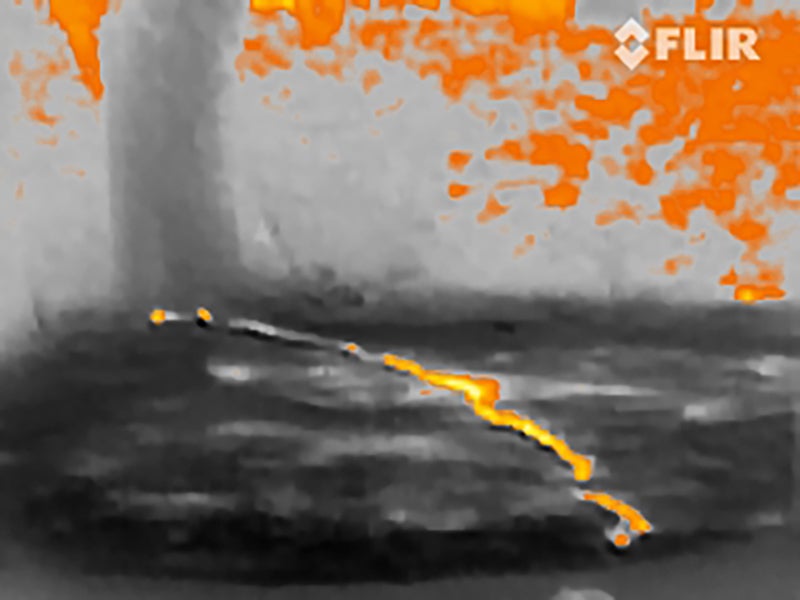
Likes
- Well-made and rugged, you can put the Scout TK through heavy use in bad weather.
- Long battery life. Five hours is more than anyone needs.
- Works just like a USB stick when connected to your computer; no proprietary software necessary to pull off the .jpgs and .mp4s.
- Intuitive user interface and simple controls.
- Allows you to see at night, without giving up your position.
Dislikes
- 100-yard effective range is extremely limited; most animals stay well outside that.
- Displays relative heat differences, not absolute levels. You can’t use the Scout TK to estimate or measure temperature.
- Limited resolution makes it hard to identify objects at any distance.

Should You Buy One?
The FLIR Scout TK is a neat toy, but it's also a hard purchase to justify.
As a security tool, its applications are limited. Camping somewhere sketchy by yourself? I can understand the desire to see without giving up your position. But that said, if a threat is already within 100 yards, well, they already know exactly where you are. Worried about movement outside your house? Your money is better spent on motion-sensor security lights. Are you really going to pull this out of your pocket to scan a dark alley? Just avoid that dark alley.
Trying to spot animals? It’s extremely rare that anything worth seeing will move to within 100 yards of you at night. For hunters, the only real potential use is in locating a dead animal. And even that’s a long shot, dependent on terrain and brush working in your favor.
, purchased at one-sixth of the cost, and with many more uses, would handle all of the above scenarios better, and give you a longer visible range, even if it does give up your position.
Trying to use the Scout TK to move through tricky terrain at night is difficult and awkward. You’d be better off taking the time to allow your eyes to adapt to the dark, then moving slowly.
People who just want to play around with thermal imaging may find the a better option. It’s a thermal camera that mounts to your smartphone, allowing you to use that as a screen. Its lens is optimized for close-up viewing: it can see a wider field of view, but doesn’t have the Scout TK’s range. And obviously lighting up your phone’s screen will give up your position at night.
Leupold has also just starting selling , at a similar price. It includes image magnification, but otherwise appears to have the same limitations.
